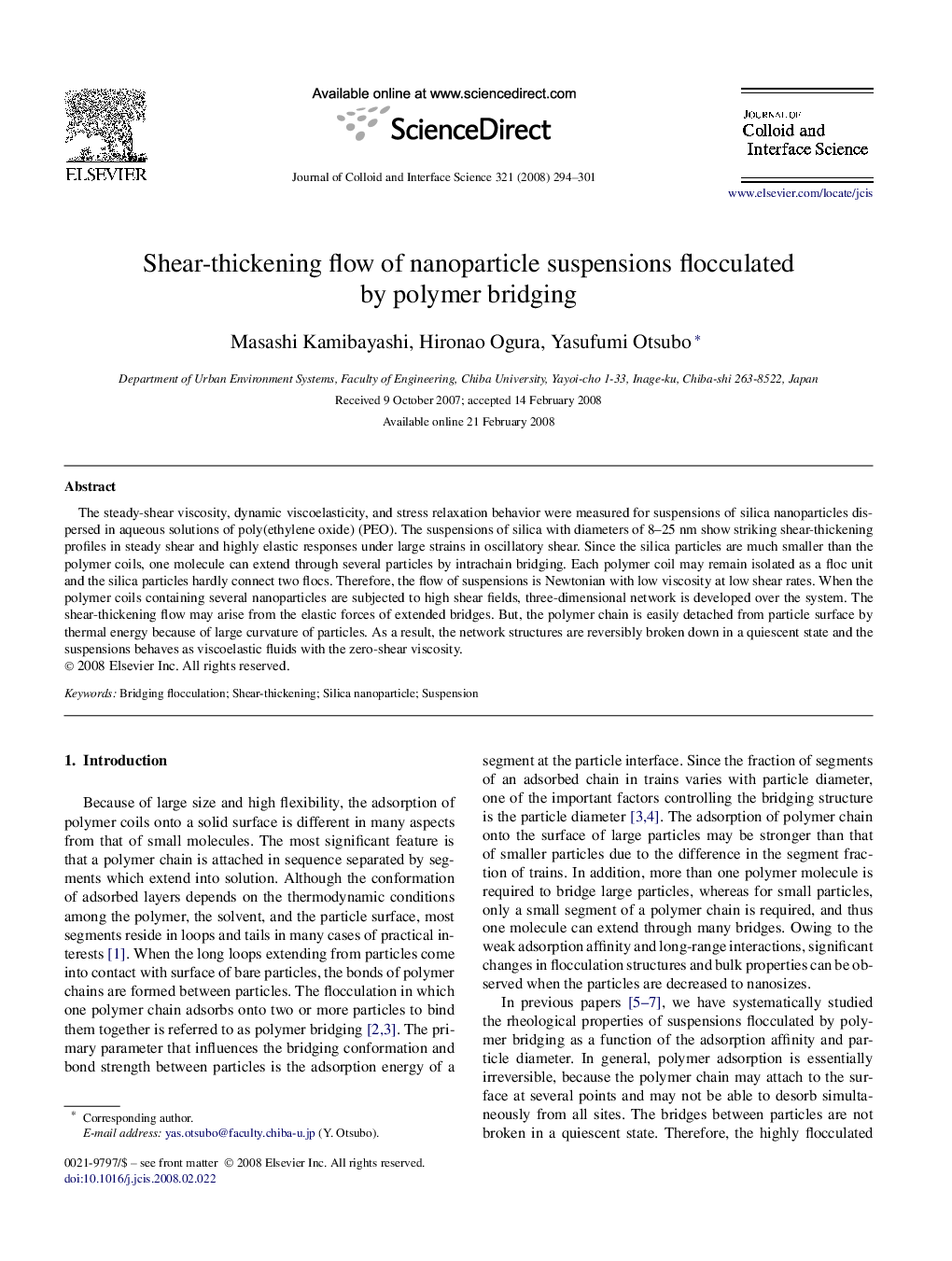| کد مقاله | کد نشریه | سال انتشار | مقاله انگلیسی | نسخه تمام متن |
|---|---|---|---|---|
| 611222 | 880670 | 2008 | 8 صفحه PDF | دانلود رایگان |

The steady-shear viscosity, dynamic viscoelasticity, and stress relaxation behavior were measured for suspensions of silica nanoparticles dispersed in aqueous solutions of poly(ethylene oxide) (PEO). The suspensions of silica with diameters of 8–25 nm show striking shear-thickening profiles in steady shear and highly elastic responses under large strains in oscillatory shear. Since the silica particles are much smaller than the polymer coils, one molecule can extend through several particles by intrachain bridging. Each polymer coil may remain isolated as a floc unit and the silica particles hardly connect two flocs. Therefore, the flow of suspensions is Newtonian with low viscosity at low shear rates. When the polymer coils containing several nanoparticles are subjected to high shear fields, three-dimensional network is developed over the system. The shear-thickening flow may arise from the elastic forces of extended bridges. But, the polymer chain is easily detached from particle surface by thermal energy because of large curvature of particles. As a result, the network structures are reversibly broken down in a quiescent state and the suspensions behaves as viscoelastic fluids with the zero-shear viscosity.
Photographs and structural models of shear-thickening suspensions in a quiescent state (a) and right after shaking (b). The suspensions are converted from fluids with low viscosity to gel-like pastes on the application of violent shear.Figure optionsDownload as PowerPoint slide
Journal: Journal of Colloid and Interface Science - Volume 321, Issue 2, 15 May 2008, Pages 294–301